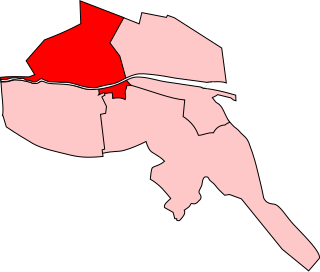
Carlow County was a parliamentary constituency in Ireland, which from 1801 to 1885 returned two Members of Parliament (MPs) to the House of Commons of the United Kingdom of Great Britain and Ireland, and one MP from 1885 to 1922.

Waterford was a parliamentary constituency in Ireland, represented in the British House of Commons.
Mid Armagh was a constituency in the Parliament of the United Kingdom. It was created by the Redistribution of Seats Act and first used at the 1885 general election. It returned one Member of Parliament (MP) until it was abolished with effect from the 1922 general election.
Waterford City was a United Kingdom parliamentary constituency, in southeast Ireland.
North Armagh was a UK Parliament constituency in Ireland which returned one Member of Parliament from 1885 to 1922, using the first past the post electoral system.
South Armagh was a UK Parliament constituency in Ireland which returned one Member of Parliament from 1885 to 1922, using the first past the post electoral system.
West Wicklow, a division of County Wicklow, was a parliamentary constituency in Ireland, represented in the Parliament of the United Kingdom. From 1885 to 1922 it returned one Member of Parliament (MP) to the House of Commons of the United Kingdom of Great Britain and Ireland.
South Tyrone was a UK Parliament constituency in Ireland which returned one Member of Parliament from 1885 to 1922, using the first past the post electoral system.
North Kilkenny was a parliamentary constituency in Ireland, represented in the House of Commons of the Parliament of the United Kingdom. It returned one Member of Parliament (MP) from 1885 to 1922.
West Down was a UK Parliament constituency in Ireland which returned one Member of Parliament from 1885 to 1922, using the first past the post electoral system.
North Fermanagh was a UK Parliament constituency in Ireland which returned one Member of Parliament from 1885 to 1922, using the first past the post electoral system.
South Fermanagh was a UK Parliament constituency in Ireland.
North Londonderry was a United Kingdom Parliament constituency in Ireland.
South Londonderry was a UK Parliament constituency in Ireland. It returned one Member of Parliament (MP) to the British House of Commons from 1885 until it was abolished in 1922.
Mid Down was a UK parliamentary constituency in Ireland. It returned one Member of Parliament (MP) to the British House of Commons from 1918 to 1922, using the first past the post electoral system.
St Michan's, a division of Dublin, was a UK parliamentary constituency in Ireland. It returned one Member of Parliament (MP) to the British House of Commons 1918–1922, using the first past the post electoral system.

College Green, also called Dublin College Green or College Green Division, Dublin, was a UK parliamentary constituency in Dublin. It returned one Member of Parliament (MP) to the House of Commons of the Parliament of the United Kingdom from 1885 to 1922.
North East Tyrone was a parliamentary constituency in Ireland. From 1918 to 1922 it returned one Member of Parliament (MP) to the House of Commons of the Parliament of the United Kingdom, elected by the first-past-the-post voting system.
North West Tyrone was a UK parliamentary constituency in Ireland. It returned one Member of Parliament (MP) to the British House of Commons from 1918 to 1922.
Mid Antrim was a UK Parliament constituency in Ireland which returned one Member of Parliament from 1885 to 1922, using the first past the post electoral system.


